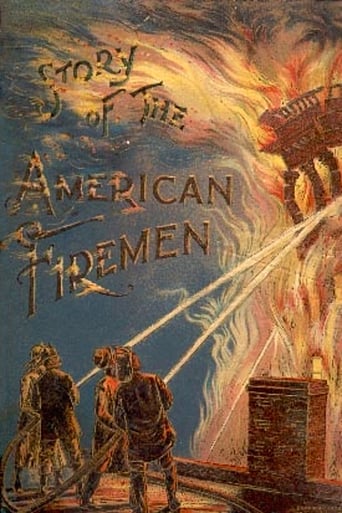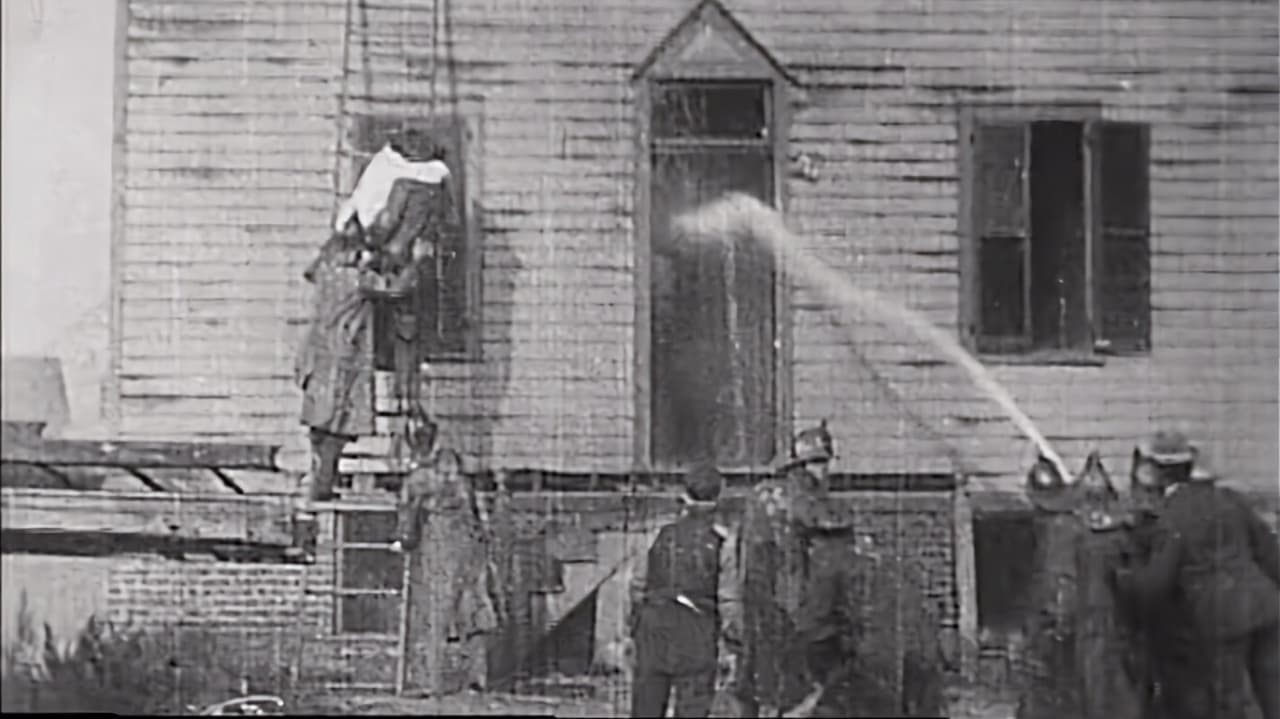Horst in Translation (filmreviews@web.de)
Yes these existed already 112 years as well. This is a documentary (or is it a drama movie?) by Porter, Fleming and Edison, three of the most famous early silent film pioneers in the United States. With that background, I can also forgive them for the very patriotic title as lives of firemen in other countries would not look any different. Here we see how they arrive at the scene, rescue the woman caught upstairs in the smoke and flames and finally extinguish the fire. Scenes of carriages riding to fires were very famous contents in the early days of filmmaking and these 7 minutes here include this as well. Obviously, they had no cars back then. Maybe worth a watch for historic reasons, but other than that, this was a fairly boring and predictable watch. Thumbs down.
cricket crockett
. . . as opposed to the grand documentary suggested by the Edison title. I've seen many bits and pieces from this 6 minute, 45.28 second crazy quilt in other Edison shorts from the previous decade (some from possibly ACTUAL fire runs with REAL firemen!). The long ending sequence at the prop house with smoke machines and histrionic actors was especially familiar to Edison peep show viewers who were repeat dupes--I mean, customers. If you watch this mish-mash closely, it makes little sense. The part I find most ludicrous is the lingering shot of the alarm being sounded by someone pulling the lever inside a fire box. This alarm box is located on a city sidewalk, and the fire turns out to be in the suburbs at a frame house five or ten miles away! Presumably, old Tom's entertainment empire henchmen thought so little of their viewers' intelligence that they would assume a passerby could see a fire, saunter for an hour or two till reaching the big city call box, pull the alarm, wait for three different convoys of fire vehicles to reach the country, arriving just as the lady of the house (who has apparently been stumbling around in the smoke FOR 3 HOURS!) finally collapses onto a conveniently placed bed. I've heard of the suspension of disbelief, but Thomas Edison figured his suspenders reached to the moon!
edalweber
Kenneth MacGowan in his book "Behind The Screen" discusses this film at length. He was familiar both with the controversial print and the paper print in the Library of Congress.He didn't think that the evidence of the paper print was conclusive.At the time, a movie could be copyrighted only as a collection of still photos, which is why the paper prints were made.For that purpose, it didn't matter whether they were in the final edited form,or even if there was more footage than in the released version.MacGowan thought that a hastily assembled negative was used to make the paper print,with all of the footage shot from one angle together.Porter therefore had more time for final editing without delaying the copyright process.The question is, if the existing copy was reedited, who did it and why? Certainly not during the silent era? by the time such editing became more common, this picture was an obsolete relict of a primitive era.And if reedited then, where are the title cards? They weren't in use in 1903 when the picture was made,but came into general use a few years later. So why "modernize" the movie in one way, but not another? It seems strange that they were not added.MacGowan admits that there is certainly a question about the complex editing, but points out that Porter took exactly the shots he needed for it.And as to why he never used it again, there are two factors. It may have been too advanced and confusing for the audiences of 1903,just as later audiences found the more complex editing of Griffith's "Intolerance" even more confusing.And there is evidence that Edison disapproved of Porter's editing.Edison involved himself in every aspect of his companies' operation, insisting on personally approving each piece of music that went on his records,for example.Which didn't help sales, as he didn't have very good taste.Edison's word was law, and Porter would have bowed to it without complaint. In addition, the Edison Catalogue of that time specifically stated that after the woman was carried out of the room by the fireman, there was a dissolve to the outside of the building,the woman pleads for the fireman to rescue the child, and he returns up the ladder.The copyright version shows the fireman carrying out the mother and returning immediately to rescue the child in one continuous shot with no dissolve to the outside.Since the catalogue is so specific on this point it would certainly seem that there was inter cutting not shown in the copyright print.
Snow Leopard
This short feature creates a pretty good sense of excitement and suspense. It seems to have been well-crafted, although the print is not always very clear now. It could almost be called a big-budget picture for its time, due to all the vehicles and equipment that they used in it.The first part of the film might be the most impressive, as the line of horse-drawn fire engines with all of their equipment race to the scene of the fire. The vantage point for the camera is well-chosen, and it does well in conveying the urgency of the situation. As it goes on to show the fire-fighters battling the blaze, the settings are believable, and they also seem rather detailed, although much of the detail is now obscured by the physical deterioration of the film.This was an ambitious effort for 1903. It still works well, and it is also an interesting look at the past.


 AD
AD


